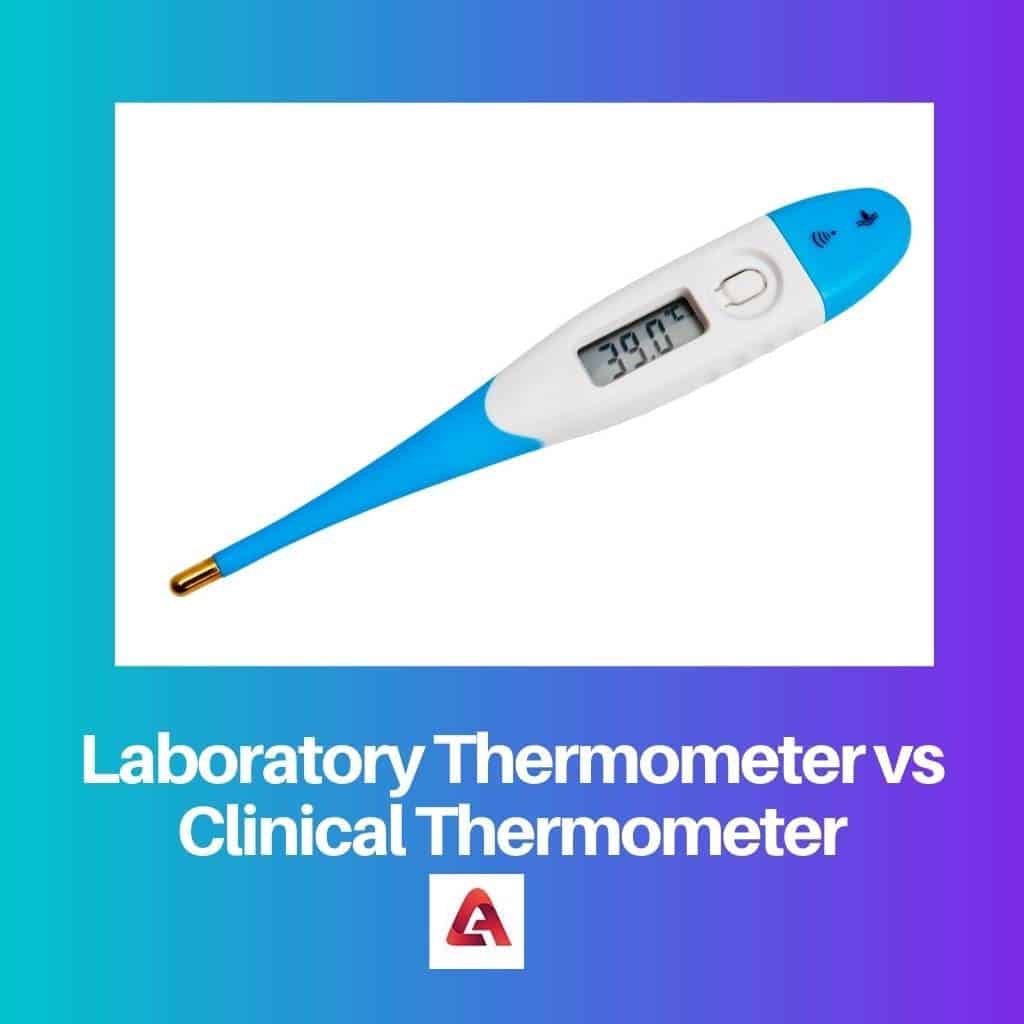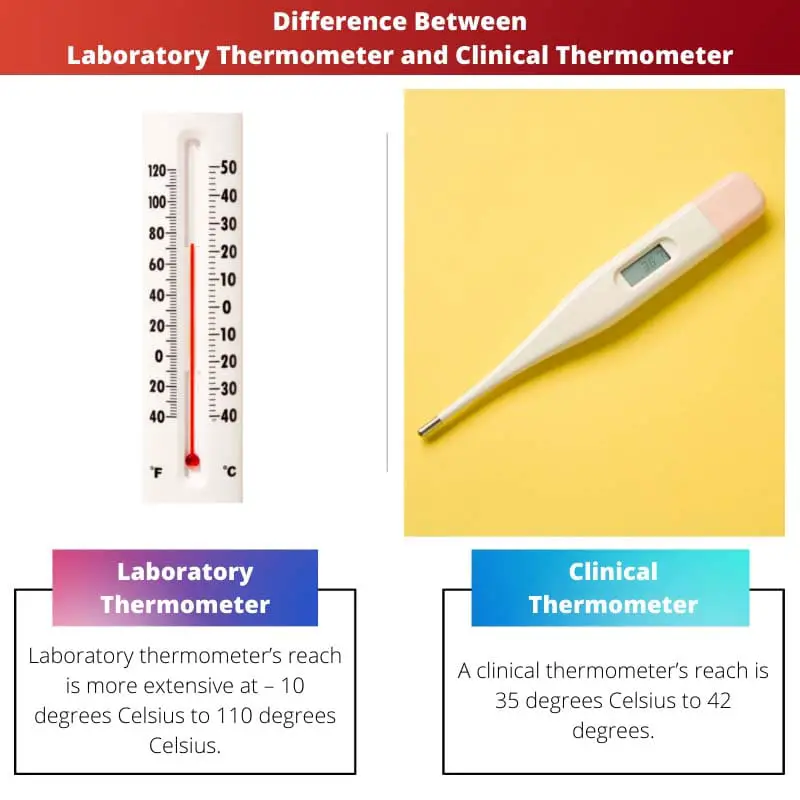Liquids’ hotness or frigidity is estimated utilizing laboratory and clinical thermometers. They are vital for checking speculations, saving lives, and different techniques that elevate the will to live.
Key Takeaways
- Laboratory thermometers are more accurate and have a higher measurement range than clinical thermometers.
- Laboratory thermometers are used for scientific experiments, while clinical thermometers measure body temperature.
- Laboratory thermometers have longer stems and are made of more durable materials, while clinical thermometers are shorter and made of safe materials for the human body.
Laboratory Thermometer vs. Clinical Thermometer
Laboratory thermometers are designed for use in scientific and industrial settings, where precise temperature measurements are required. These thermometers are made of glass or other materials. Clinical thermometers are designed for use in healthcare settings, where accurate temperature measurements are important for diagnosing and treating illness.

Laboratory thermometers are fundamental for observing investigations, assessing test materials, adjusting instruments, and other logical methodology. Numerous analysts use them to discover the freezing and edges of boiling over.
A slender container of uniform and a fine bore is connected to the bulb. The delicate thin cylinder has a narrowing, which empowers the account of the very pinnacle of the body’s temperature without the scramble requirement.
Comparison Table
| Parameters of Comparison | Laboratory Thermometer | Clinical Thermometer |
|---|---|---|
| Temperature Range | Laboratory thermometer’s reach is more extensive at – 10 degrees Celsius to 110 degrees Celsius. | A clinical thermometer’s reach is 35 degrees Celsius to 42 degrees. |
| Accuracy | A laboratory thermometer is more perplexing. | It is more accurate. |
| Accessibility | More people need clinical thermometers. | Gadgets are more open when contrasted with laboratory thermometers. |
| Location | Lab thermometers are situated in labs. | Clinical thermometers are frequently used in houses, facilities, and clinics. |
| Mercury | Mercury is less disadvantageous among laboratory thermometers. | Clinical thermometer clients, as the last, are all the more utilized by the majority and have fewer limitations. |
What is Laboratory Thermometer?
A laboratory thermometer is utilized in research facilities to quantify temperature with high precision. It tends to be part of the way or completely drenched in the estimated substance.
A laboratory thermometer is, by and large, scaled from – 10oC to 110oC. In any case, the scope of estimation can shift broadly between models.
Thermometers are essential for noticing examinations, evaluating test materials, changing instruments, and other consistent techniques. Various examiners use them to discover freezing and edges bubbling over.

What is a Clinical Thermometer?
A clinical thermometer, also called a clinical thermometer, estimates a human or creature’s internal heat level. The thermometer comprises a tube-shaped bulb that is loaded up with mercury.
Since the temperature of the human body changes from 95oF to 110oF, the thermometer is aligned in this temperature range. Every degree is isolated into five little equivalent divisions.
To decide the temperature, an individual needs to hold the tip of the thermometer either under the armpit or in the mouth under the tongue briefly.
A thin compartment of uniform and a fine bore is associated with the bulb. The exemplary slim chamber has a narrowing, which enables the record of the actual zenith of the temperature of the body without the necessity for the scramble.

Main Differences Between Laboratory Thermometer and Clinical Thermometer
- The clinical thermometer is scaled from 35oC to 42oC or 94oF to 108oF. Whereas the Laboratory thermometer is, for the most part, risen from – 10oC to 110oC.
- Clinical temperature can be perused after eliminating the thermometer from the armpit or mouth. Whereas the Laboratory temperature is perused while keeping the thermometer in the source like fluid or anything.




